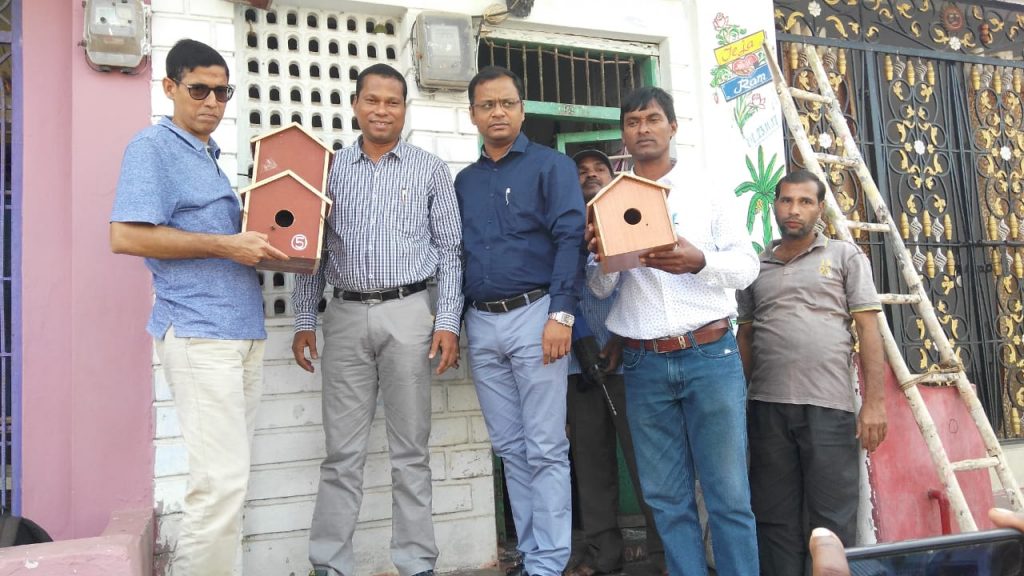Berhampur: The fast depleting population of the house sparrow in Ganjam district has evoked forest department and a few voluntary organizations to set up man made nests at Gopalpur.
The Rushikulya Sea Turtle Protection Committee (RSTPC), compromising youth of Purunabandh village in Ganjam district, is striving to protect the endangered Olive Ridley turtles. The campaign is picking pace with fishing bans already implemented; they are now setting building blocks to boost the ‘Save Sparrow’ campaign.
The committee aims to fabricate at least 500 artificial nests for sparrows in Berhampur and Gopalpur. In the first phase, the youths have set a target of 200 nests.
The ‘Save Sparrow’ campaign was launched in Gopalpur 3 years ago.
Encroachment of green space, use of insecticides and pesticides, increase in population levels and radiations from cell phones towers has affected the reproduction of these birds.
The youth in collaboration with the forest department is aiming to plant as many neem trees as possible. ‘Neem trees’, as research states, are highly essential for the survival of sparrows.
The sparrow diet mainly consists of grain and livestock. White millet is the favorite seed of sparrows. They’ll also eat red millet. Medium cracked corn is the best size corn for all species of sparrows’ small beaks. In the wild or in the yard, sparrows of all kinds also eat insects and tender plant food such as grasses and buds. They feed insects to their offspring. From the types of bird seeds for home bird feeders, some of their favorite types are corn and black oil sunflower seeds.
“To conserve the bird, we purchased some earthen pots and placed near the roofs of some houses in the village, where the birds can setup their nest,” said Regional chief Conservator of forest (Berhampur) Suresh Pant and divisional forest officer (Berhampur) AK Behera.
Everybody must come forward to install at least one nest for sparrow in their house”, the two officials said.
PNN
